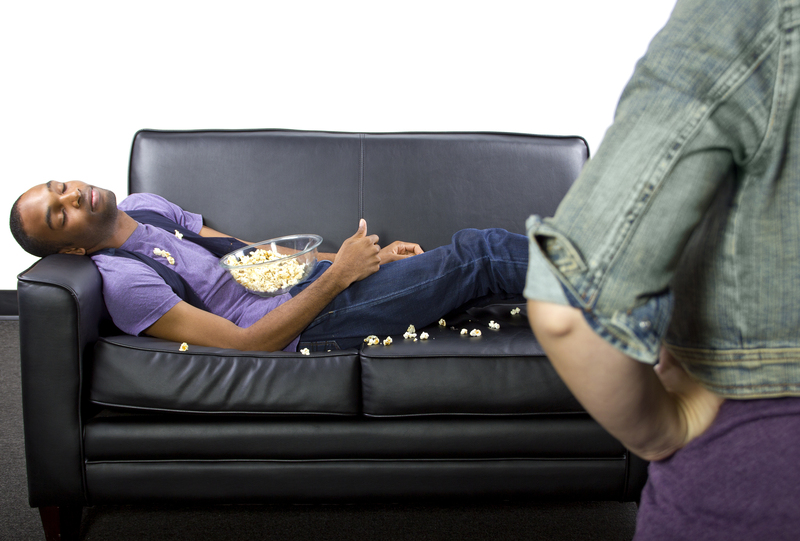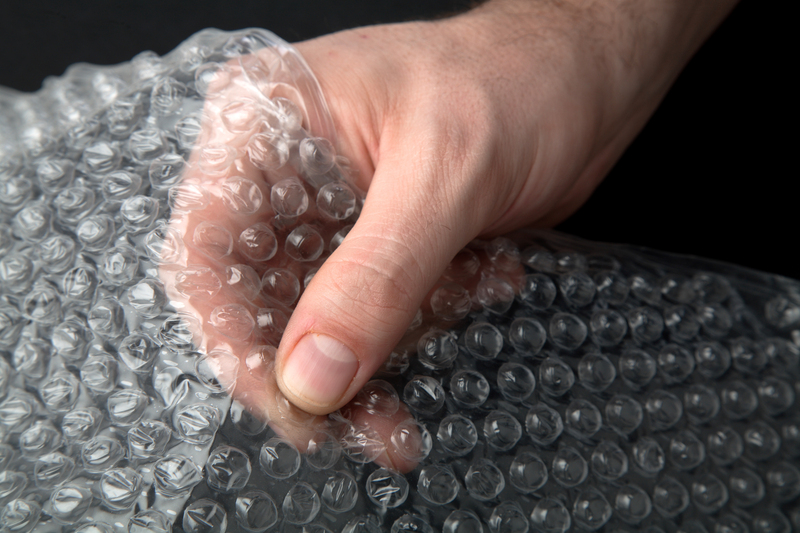Pack Like a Pro: Tips for Moving House with Ease
Moving house is often listed as one of life's most stressful events, but it doesn't have to be that way. With the right strategies and a bit of planning, you can pack for moving efficiently and enjoy a smooth relocation. Whether you're moving down the street or across the country, learning how to move house with minimal stress will save time, money, and your sanity.
Why Proper Packing Matters When Relocating
Efficient packing is the foundation of a successful move. It prevents damages, saves you money on supplies and labor, and ensures an organized moving process. Packing up a home is more than just throwing things into boxes--doing it like a pro makes all the difference!
- Reduces risk of damage - Well-packed items are less likely to break or get lost.
- Saves time and effort - Proper labeling and categorization help during both packing and unpacking.
- Minimizes stress - Organization leads to clarity throughout the moving process.

Early Planning: The Key to Moving House with Ease
The Four-Week Rule
Start planning at least four weeks before your moving date. This *gives you enough time* to sort, pack, and coordinate logistics. The earlier you start, the less overwhelming the move will feel.
- Create a moving checklist - Track tasks and deadlines.
- Book removals early - Secure your preferred moving company.
- Gather packing materials ahead - Boxes, tape, bubble wrap, markers, and labels should be ready before you start packing.
Decluttering Before Packing
Packing less means moving less. Before you even pick up a box, go through your belongings room by room. Sell, donate, or dispose of anything you no longer need. Be ruthless - moving is the perfect time to declutter!
Benefits of decluttering before moving:
- Reduces volume - Fewer items to move, pack, and unpack.
- Decreases moving costs - Lower weight and volume may cut van or truck fees.
- Provides a fresh start - Your new home will feel organized from day one.
Gathering Packing Supplies Like a Pro
Set yourself up for packing success by investing in the right materials. For hassle-free house moving, you should have:
- Sturdy boxes in various sizes (small, medium, large, and specialty for wardrobe, pictures, etc.)
- Bubble wrap and packing paper for cushioning fragile items
- Packing tape and a dispenser for quick sealing
- Permanent markers for labeling
- Labels or color-coded stickers for better organization
- Stretch wrap for securing drawers and bundled items
- Plastic bags for screws, bolts, and small parts
Pro Tip:
Don't overlook repurposing suitcases, baskets, or laundry bins as moving containers. These are sturdy and can transport heavier items easily.
Room-by-Room Packing Guide for House Moves
Kitchen
- Sort and purge unused appliances, chipped dishes, and expired foods first.
- Wrap fragile items (glasses, plates) individually with packing paper or bubble wrap.
- Disassemble appliances and pack parts separately with instructions for reassembly.
- Use dish pack boxes for especially fragile china or glassware.
Living Room and Bedrooms
- Pack books in small boxes to prevent excessive weight.
- Remove bulbs and lampshades from lamps, wrap separately.
- Wardrobe boxes are perfect for hanging clothes and keeping them wrinkle-free.
- Bedding and linens can double as padding for other boxes.
Bathrooms
- Seal liquids and toiletries in plastic bags to prevent leakage.
- Pack towels last for easy access (they'll also come in handy on moving day).
Garage & Storage Areas
- Safely dispose of hazardous or flammable items (most movers won't move these).
- Use original boxes for tools & equipment when possible.
- Label and bundle garden tools.
Essential Packing Techniques for an Organized Move
Packing up your home isn't just about filling boxes. Incorporate these smart packing techniques to ensure a smooth transition:
Label Every Box Clearly
- Room location - Write the room and a brief description on at least two sides.
- Contents - List major items or category (e.g., "Kitchen: Pots & Pans").
- Fragile mark where appropriate to alert movers.
- Color code by room for easier unloading and sorting.
Clear labeling is essential for quick unpacking and helps professional movers place boxes where they belong.
Keep an Essentials Box
- Daily essentials - Toothbrush, medications, phone chargers, basic tools, overnight clothes, snacks, and important documents should be easy to reach.
- Designate a "Day One" box for each family member if possible.
Unpacking can take several days, so make your first night in your new home as comfortable as possible.
Use the Right Packing Methods
- Heavy items on the bottom, lighter on top
- Fill gaps with soft items (towels, clothes, or packing paper) to prevent shifting
- Don't overload boxes - they should be easy to lift and carry safely
- Seal boxes securely with at least two strips of tape
Take Photos of Electronics
Before unplugging your gadgets and appliances, take quick photos of cable connections. This little step takes the headache out of setting them up in your new home.
Disassemble Furniture Where Possible
- Detach legs or removable parts and keep screws/bolts in labeled bags taped to the item
- Wrap components separately to avoid scratches or loss
Protecting Valuables and Keepsakes
- Pack valuables separately (jewelry, important documents) and transport them yourself when possible
- Consider insurance coverage for rare or expensive items
Making Moving Day Go Smoothly
By the time moving day arrives, your planning and packing will pay off! Here's how to ensure moving day is *smooth and stress-free*:
- Have a clear schedule and communicate it with your moving company and anyone helping you
- Protect carpets and walls at both properties from scratches or dirt using drop cloths or old sheets
- Supervise loading - Ensure boxes marked as "fragile" receive extra care
- Do a final walk-through before leaving to check for overlooked items
- Be present at your new home to direct movers where boxes and furniture should go
Unpacking Like a Pro After Moving
Unpacking can seem daunting, but with a little organization you can settle into your new home quickly.
- Start with essentials - Kitchen, bathroom, and bedrooms should be unpacked first
- Break down boxes as you go to keep the space tidy
- Organize as you unpack for a clutter-free new space
- Take your time - It's tempting to rush, but thoughtful setup saves stress later
Bonus Tips: How to Save Time and Money When Moving House
- Host a garage sale or sell online to downsize and earn extra cash before the move
- Use what you have - towels and linens make great packing materials
- Book your movers mid-week or mid-month when demand (and prices) are lower
- Collect free boxes from local retailers, friends, or community groups
- Enlist help from friends and family for packing and loading where possible
Common Packing Mistakes to Avoid When Moving House
To truly pack like a professional, steer clear of these frequent errors:
- Procrastinating - Last-minute packing increases stress and risk
- Using worn boxes - Always choose sturdy, undamaged containers
- Forgetting to label - Unmarked boxes can wreak havoc when unpacking
- Packing hazardous or restricted items - Check with your movers for a list of non-transportable goods
- Overstuffing boxes - This leads to breakage and makes boxes difficult to carry
- Neglecting an essentials box - Keep key items accessible for the first 24-48 hours

Summary: Pack Like a Pro for a Stress-Free Move
Moving house is a big task, but with these comprehensive tips, you can pack like a pro and relocate with ease. Start early, declutter, use quality supplies, and employ smart organizing techniques. Not only will you save time and money, but you'll also make the transition to your new home positive and stress-free.
Frequently Asked Questions About Packing for Moving House
How early should I start packing for a move?
Ideally, begin packing 4-6 weeks in advance. Start with items you use least often and tackle one room at a time.
Do I need professional movers for a small move?
Not always. For smaller moves, DIY with help from friends may be enough. However, professional movers offer peace of mind for fragile or valuable items and long-distance relocations.
What won't movers transport?
Most houses moving companies restrict hazardous materials (like paint, propane, and chemicals), plants, perishable foods, and personal valuables (including cash or jewelry).
How do I keep track of all my boxes?
Number each box and keep a corresponding inventory list of their contents and designated room. Color coding also makes sorting easier on arrival.
Should I empty drawers before moving furniture?
Yes, empty heavy drawers to avoid damage or strain. However, very light, non-fragile items (like clothes) can sometimes be left in place if the furniture will be handled gently.
Final Thoughts: Move House Like a Pro
With a well-thought-out plan and these expert packing tips for moving house, you'll transform your moving day from chaos into an organized, efficient process. Remember to begin early, use proper materials, and label everything as you go. Your new home awaits--enjoy the journey and settle in with ease!



